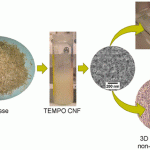Scientists at Northwestern University, Illinois just can’t stop making medical breakthroughs with 3d printing methods. Last month we told you about their promising hyperelastic bone made from a bioengineered composite material. Now their research has come up trumps once more with another exciting medical development: 3D printed biodegradable heart stents.
Guesswork
Traditional heart stents treat weakened or abnormally narrow arteries. But they often pose issues to patients. Despite the highly complex nature of stent implantation, and the obvious skills that heart surgeons possess, there is always a small degree of guesswork involved in deciding whether a stent is the correct size for a given patient. This means that stents that move pose the chance of failure, potentially exposing the patient to more risk. Furthermore, 1-2 percent of people with stents develop a blood clot within the first few months after implantation. So how do the biodegradable stents overcome these issues?
The 3D printed biodegradable stents help to overcome both issues by offering both customization and anti-coagulation. A citrus-based polymer material with natural anti-oxidant properties is used to make the stents. The researchers in question used projection micro-stereo-lithography to print them with a unique process they call microCLIP. This 3D printing technique produces the stents using light and a photocurable liquid resin. The method allows for microscopic customization of the stent to suit each patient’s unique blood vessel shape. This minimizes the potential for geometric and biological complications to arise. Furthermore, the material appears to inhibit clot formation. Researchers predict that the possibility to load the stent with anti-coagulant drugs is real, which offers even more protection and boosts healing times.
MicroCLIP
The unique method known as microCLIP stands for micro continuous liquid interface production. The 3D printed method offers the capability to print up to one hundred units at a time in just four minutes, which is pretty impressive. This is significantly less than the time it takes to manufacture heart stents with traditional methods. A new video, released by Northwestern University within the last few days, shows exactly how it works. This video shows the ground-breaking method in action.











